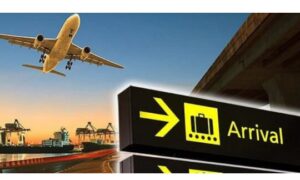Traveling abroad can be an exhilarating experience. It’s a chance to immerse oneself in a new culture, taste exotic foods, and meet diverse people. But it can also be daunting, especially when it comes to navigating foreign public transportation.
Understanding the local transit system is crucial if you’re to explore a city like a local. From deciphering complex subway maps to figuring out bus schedules, it can be a real challenge. But don’t let that deter you.
Researching the Local Transit System
Familiarity breeds confidence. The key to mastering foreign public transportation lies in thorough research. Diving headfirst into the labyrinth of a local public transportation system may create hurdles. But don’t be daunted as investing time in research prior to travel makes the journey smoother.
Online platforms are integral to any contemporary travel story. A simple Google search will reveal a heap of information about any local travel system. Look for the official websites of the city’s public transport providers. These sites typically offer details such as network maps, timetable information, pricing, and sometimes tips for tourists.
Taking it a step further, downloading transit apps on the smartphone makes navigation far more manageable. Many cities have official transit apps that make real-time updates accessible. In addition, third-party apps like ‘Citymapper’ and ‘Google Maps’ help sketch out routes, timelines, and even cost estimates in cities worldwide. Remember to download the necessary data or maps for offline use, in case of uncertain internet access.
While online research serves as an excellent starting point, don’t overlook the power of traditional wisdom. Reach out to trusted travel guides or forums for advice on getting around. Travel Tweaks is a treasure trove of transit tips, often providing insight that extends past mainstream advice. It’s noteworthy that these resources also open up discussions about local customs and etiquette related to public transportation.
Don’t shy away from making inquiries at your embassy or consulate as well. They’re equipped to provide first-hand, reliable information about local conditions and can be particularly helpful in places with less digital infrastructure.
Remember, knowledge is a traveler’s best tool. Augment this knowledge with observations once on the ground. You’ll discover that the seemingly complex web of routes, schedules, and fares transforms into a stimulating part of the travel story you’re there to create.
Understanding Subway and Metro Maps
Confused by the jigsaw puzzle of lines on a subway map? Don’t worry! It’s all about breaking it down. The schema of underground and overground networks may appear intricate at first glance, but there’s a method to the apparent madness.
Firstly, understanding that the map is not to scale is pivotal. What seems to be long stretches of routes on the map may actually be a quick two-minute subway ride. The map is a schematic layout of the routes to showcase the links between different stations rather than their physical distance.
Secondly, each line is color-coded. This helps in identifying which line to take even when names are in a foreign language. Understanding the direction is also crucial. Subway metros usually have two directions – named after the last stop on each end of the line.
Thirdly, ‘Interchanges’ or ‘Transfer Stations’ marked differently on the map, are key points where you can switch from one line to another. This makes it possible to move across different parts of the city without exiting the station.
Knowing the general layout of the city helps too. Major landmarks are usually marked on the maps. Pinpointing your destinations and marking them down on the map using apps like ‘Citymapper’ or ‘Google Maps’ can simplify your navigation.
This said, brushing up on some local language phrases related to travel isn’t a bad idea either. Phrases for directions, common locations, asking for help, and understanding the local numbers can serve as a life-saver during your exploration.
One last tip: Subway and metro systems around the world operate on different clock schedules. Understanding the hours of operation before venturing out is a smart move. The last thing you want is to miss the last ride back to your lodging!
Figuring Out Bus Schedules and Routes
The might of the internet presents an all-encompassing array of tools to help demystify otherwise complex bus schedules and routes. Travelers should get familiar with dedicated local websites or mobile apps that provide reliable and updated information. Google Maps, as an example, is nearly universal, often including bus schedules as part of its navigational aids. To make the most of such resources, acquiring a local SIM card for on-the-moving internet access can be a game-changer.
Being aware of peak hours is crucial for planning. It’s often during these hours when buses run more frequently. Peak hours are usually during the morning and evening commute times. On weekends and holidays, services can operate on a different timetable.
For those bound for less-trodden paths, a fair share of challenges can be expected. When it comes to bus routes leading to far-flung destinations, time tables can tend to be less consistent and information harder to obtain. It’s paramount to secure information from local road authorities, tourism offices or hotels. It might require asking around and brushing up on local language skills.
Here’s one scenario where the power of travel apps shine once more. Apps such as Rome2Rio fill this gap as it gives directions for places around the world, including remote locations that may have limited public transportation.
Moreover, mastering bus routes is an art. Bus lines often serve certain areas or districts in a city. Understanding which bus to take often revolves around identifying where they originate and terminate. The bus number usually designates its route.
In the face of these complexities, pre-planning a journey can be the key to a seamless commute. Remember to save map data offline on mobile apps for easy perusal. For the most part, it’s all about striking a delicate balance between careful planning and adventurous spontaneity. All the while, keeping safety as a priority at all times.
Navigating Ticketing Systems and Fares
One major aspect of mastering foreign public transit is getting a handle on the ticketing systems and fare structures. They can sometimes seem like a labyrinth, but once they’re decoded, everything gets much simpler.
Firstly, it’s essential to discover the types of tickets available. Often there are options like single-ride tickets, day passes, multi-day passes, or rechargeable smart cards. Tourists should remember that there might be specialized tickets for groups, families, or tourists that could potentially save them money.
To that end, a visitor can usually purchase tickets from kiosks at the transit hubs, corner shops, or online if they have mobile data connection. Comprehend the rules associated with purchasing tickets in that specific city. For instance, in some cities, you might need to validate your ticket at a machine before you board. In others, you might be expected to show your ticket to the conductor on demand. It’s very different everywhere.
One of the common mistakes many travelers make is not understanding the zone system. Many big cities divide their public transportation system into zones, and the price of your ticket will depend on how many zones you cross. Apps, such as Citymapper or Google Maps, are immensely helpful in visualizing routes and zones. These apps will inform if you’re about to cross into another zone and will calculate the cost accordingly.
Plunge into deciphering complex fare structures and get acquainted with fare stipulations to avoid confusion later on. Multi-lingual displays at ticket machines and information signs can be a real lifesaver. Prepare for the unexpected expenses, there are sometimes additional charges for luggage or traveling during peak hours.
Using Mobile Apps and Technology to Navigate
In today’s digital age, mobile apps play a pivotal role in navigating foreign public transportation. They’ve turned out to be the go-to guide, especially for first-time travelers looking to dodge the hassle. These intuitive apps are coupled with technology like GPS to help plan routes, locate transit stations and calculate fares, thereby reducing the guesswork.
Citymapper and Google Maps are top-rated transit apps that deliver impressive results. They display comprehensive information about local transit and significantly simplify planning. Citymapper shines in offering real-time updates and detailed route options, whereas Google Maps excels at intuitive navigation and extensive global coverage. It’s noteworthy that both apps feature offline mode, which comes handy when there’s no internet access.
Similarly, Rome2Rio is an impressive travel app worth mentioning. It specializes in providing directions to remote locations with limited public transportation, making it a great companion for those adventuring off the beaten path. It’s functionality doesn’t stop there. Rome2Rio helps estimate travel durations and approximate costs, aiding users in planning their entire itinerary.
Furthermore, language translation apps such as Google Translate are handy tools that can bolster communication efforts, particularly in non-English speaking countries. They assist in understanding travel-related phrases and signs, reducing any language barriers that may crop up during a journey.
Together, these technological tools augment travel experience by guiding the traveler through unfamiliar transit systems, ensuring they aren’t lost in transit. And while the advantages of using these tools are undeniably plentiful, it’s important to remember that, like any tool, they aren’t infallible. Travelers should still carry physical maps and written travel notes as back-up solutions. Bearing this in mind, the use of these technologies can lead to rich, immersive travel experiences.
Embrace the Adventure
Mastering foreign public transportation isn’t as challenging as it first appears. With a little research and the right tools, travelers can navigate city streets like a local. Online resources and travel apps offer a wealth of information from network maps to fare structures. Yet, it’s also important to have a backup plan like carrying a physical map or written notes. Remember, understanding local transit systems isn’t just about getting from point A to B. It’s about immersing oneself in the local culture and exploring the city on your own terms. So don’t let the fear of getting lost deter you. Embrace the adventure that comes with navigating foreign public transportation. After all, it’s these experiences that make travel unforgettable.



































